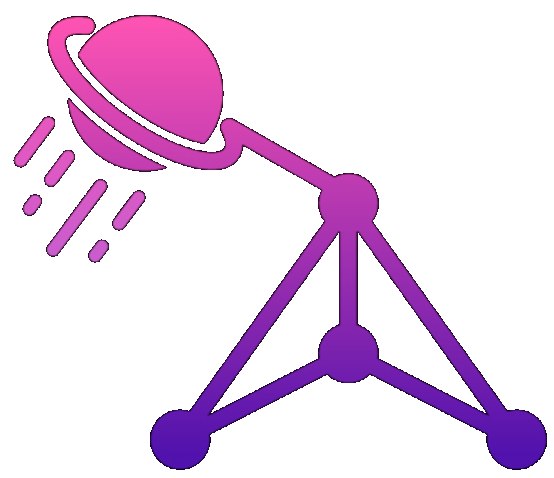"We thought we were efficient," the operations director told me. "Then we redesigned our workflows with AI and realized we'd been working at 20% capacity."
This is the story I hear repeatedly: organizations discovering that their "optimized" workflows were actually massive bottlenecks waiting to be unlocked. The difference isn't just better tools—it's fundamentally reimagining how work gets done.
Today, I want to share three real-world case studies that demonstrate the transformative power of AI-first workflow design. These aren't theoretical examples—they're actual implementations I've guided, with real results and lessons learned.
Case Study 1: Legal Document Processing Revolution
The Original Workflow
The firm's contract review process was a classic example of 'efficient" inefficiency:
- Senior attorney receives contract (avg. 45 pages)
- Initial review and risk assessment (4-6 hours)
- Junior attorney research on specific clauses (2-3 hours)
- Senior attorney final review and recommendations (2 hours)
- Client communication and negotiation points (1 hour)
The AI-First Redesign
Instead of asking "How can AI help us review contracts faster?", we asked "If we could design contract review from scratch with unlimited AI capabilities, what would it look like?"
- AI Pre-Processing: Contract ingestion, clause identification, and initial risk scoring (5 minutes)
- AI Analysis: Comparison against standard terms, identification of unusual clauses, and risk assessment (10 minutes)
- Human Strategic Review: Attorney focuses on high-risk items and strategic implications (45 minutes)
- AI Report Generation: Comprehensive analysis report with human insights integrated (5 minutes)
- Human Client Communication: Strategic recommendations and negotiation strategy (30 minutes)
85%
Time Reduction
5x
Capacity Increase
40%
Revenue Growth
95%
Client Satisfaction
"We went from being a bottleneck to being a competitive advantage. Clients now come to us specifically because we can deliver comprehensive contract analysis in hours, not days." - Sarah Mitchell, Managing Partner
Case Study 2: Healthcare Documentation Transformation
The Documentation Burden
Physicians were spending 60% of their time on documentation, leading to:
- Decreased patient interaction time
- High physician burnout and turnover
- Delayed chart completion
- Compliance concerns
The AI-Augmented Solution
We redesigned the documentation workflow to capture information naturally during patient care:
- AI Listening: Ambient AI captures patient-physician conversations
- Real-time Processing: AI extracts relevant medical information and structures it
- Draft Generation: AI creates initial documentation draft during the visit
- Physician Review: Quick review and approval (2-3 minutes vs. 15-20 minutes)
- Automated Coding: AI suggests appropriate billing codes and compliance tags
70%
Documentation Time Reduction
45%
More Patient Time
60%
Burnout Score Improvement
25%
Revenue Increase
"I remember why I became a doctor. I'm actually talking to patients again instead of staring at a computer screen." - Dr. James Rodriguez, Internal Medicine
Case Study 3: Manufacturing Quality Control Revolution
The Quality Control Challenge
Traditional quality control was creating production bottlenecks:
- Manual inspection of 100% of parts (impossible at scale)
- Statistical sampling missing critical defects
- Inconsistent inspector performance
- Delayed feedback to production teams
The AI-Vision Solution
We implemented an AI-powered visual inspection system that transformed quality control from a bottleneck into a competitive advantage:
- Real-time Imaging: High-resolution cameras capture every part at production speed
- AI Analysis: Computer vision detects defects with superhuman accuracy
- Instant Feedback: Production adjustments happen in real-time
- Human Oversight: Quality engineers focus on process improvement, not inspection
- Predictive Maintenance: AI identifies patterns that predict equipment issues
99.7%
Defect Detection Rate
80%
Inspection Speed Increase
65%
Defect Rate Reduction
$2.3M
Annual Savings
"We went from catching defects after they happened to preventing them before they occur. Our customers now see us as a quality leader, not just a supplier." - Maria Santos, Quality Director
Common Success Patterns
Across all successful workflow optimizations, I've identified five common patterns:
1. Workflow Redesign Before Tool Selection
The most successful implementations start by reimagining the ideal workflow, then selecting tools to enable it. Tool-first approaches typically achieve only incremental improvements.
2. Human-AI Collaboration, Not Replacement
The biggest gains come from combining human creativity and judgment with AI speed and consistency. Pure automation often fails; augmentation succeeds.
3. Real-time Feedback Loops
AI enables real-time optimization that was previously impossible. This creates compound improvements over time.
4. Focus on High-Value Activities
AI handles routine tasks so humans can focus on strategy, creativity, and relationship building—the activities that drive real business value.
5. Continuous Learning and Adaptation
The most successful workflows evolve continuously as AI capabilities improve and teams learn new collaboration patterns.
Implementation Lessons Learned
Focus on workflows that are currently bottlenecks or sources of frustration. Success here builds momentum for broader transformation.
Track both efficiency metrics (time, cost) and effectiveness metrics (quality, satisfaction, innovation). The biggest value often comes from effectiveness improvements.
Technical implementation is 30% of the challenge. Change management and training are 70%. Budget accordingly.
AI capabilities evolve rapidly. Design workflows that can adapt as new capabilities become available.
Your Workflow Optimization Opportunity
Every organization has workflows that could benefit from AI optimization. The question isn't whether you should optimize—it's which workflows to start with and how quickly you can implement.
- Which workflows currently create bottlenecks or frustration?
- Where do you spend time on routine tasks that could be automated?
- What capabilities would you build if time and resources weren't constraints?
- How could real-time insights change your decision-making?
The organizations that start optimizing their workflows now will build sustainable competitive advantages. Those that wait will find themselves trying to catch up to competitors who have fundamentally reimagined how work gets done.
